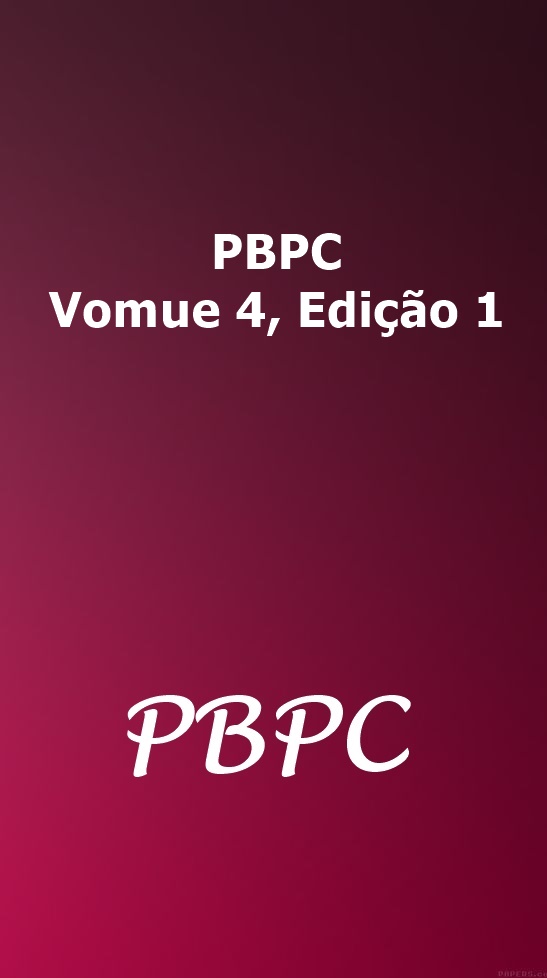LEVOSIMENDAN NO MANEJO DA INSUFICIÊNCIA CARDÍACA EM CRIANÇAS: UMA ANÁLISE DE EFICÁCIA
DOI:
https://doi.org/10.36557/pbpc.v4i1.310Keywords:
Simendan, Myocardial Contraction, Heart Failure, PediatricsAbstract
INTRODUCTION: Simendan is an inotropic agent used in the treatment of decompensated heart failure (HF), standing out for increasing myocardial contractility without significantly raising oxygen consumption. It also promotes vasodilation, reducing cardiac overload and improving tissue perfusion. Several studies investigate its safety and efficacy in children with cardiac dysfunction, especially in critical conditions. OBJECTIVE: To evaluate the effectiveness of Simendan in the treatment of heart failure in children. METHODS: This integrative review was conducted using the PubMed and Cochrane databases, with the descriptors “Simendan,” “Heart Failure,” “Treatment,” and “Children.” No filtering criteria were applied regarding the language or year of publication of the studies, allowing for the inclusion of a significant portion of the available literature. A total of 45 articles were initially identified, with 9 eliminated based on title analysis and 28 excluded after abstract review, including clinical trials and literature reviews. RESULTS: The findings indicated that Simendan improves cardiac function in children, significantly reducing end-systolic volume (p = 0.007) and heart rate (p = 0.009). Improvements were observed in systolic elastance (p = 0.008), arterial elastance (p = 0.038), ventricle-arterial coupling (p = 0.009), and mechanical efficiency of the heart (p = 0.008). The left ventricular ejection fraction showed a trend towards improvement (p = 0.054), as did the subaortic velocity-time integral (p = 0.041). In one study, 35% of patients experienced an increase in mean ejection fraction from 20% ± 12% to 35% ± 11% (p = 0.003). Repeated infusion allowed for the withdrawal of other inotropes and delayed the need for mechanical circulatory support. In terms of clinical outcomes, 89% of patients survived until ICU discharge, 78% were discharged from the hospital, 22% were referred for transplantation, and 89% were weaned off ventilatory support. Adverse effects included hypotension, tachycardia, and arrhythmias, which were generally mild and transient. CONCLUSION: Simendan is a promising therapeutic option for pediatric HF, reducing dependence on other inotropes, improving hemodynamic parameters, and increasing survival, with infrequent and mild side effects.
Downloads
References
Apostolopoulou SC, Vagenakis GA, Tsoutsinos A, Kakava F, Rammos S. Ambulatory Intravenous Inotropic Support and or Levosimendan in Pediatric and Congenital Heart Failure: Safety, Survival, Improvement, or Transplantation. Pediatr Cardiol. 2018 Oct;39(7):1315-1322. doi: 10.1007/s00246-018-1897-5. Epub 2018 May 18. PMID: 29777282.
Iacobelli R, Ricci Z, Marinari E, Haiberger R, Di Molfetta A, Toscano A, Di Chiara L. Effects of levosimendan on ventriculo-arterial coupling and cardiac efficiency in paediatric patients with single-ventricle physiology after surgical palliation: retrospective study. Interact Cardiovasc Thorac Surg. 2020 Apr 1;30(4):623-629. doi: 10.1093/icvts/ivz319. PMID: 31986196.
Kushwah S, Kumar A, Sahana KS. Levosimendan. A promising future drug for refractory cardiac failure in children? Indian Heart J. 2016 Apr;68 Suppl 1(Suppl 1):S57-60. doi: 10.1016/j.ihj.2015.09.013. Epub 2015 Nov 10. PMID: 27056655; PMCID: PMC4824328.
Landolfo F, Giliberti P, De Rose DU, Pugnaloni F, Santisi A, Columbo C, Martini L, Ronchetti MP, Di Chiara L, Toscano A, Gandolfo C, Dotta A, Capolupo I. Use of levosimendan in hemodynamic management of heart failure in two neonates with intracranial arteriovenous shunts: a case series. Ital J Pediatr. 2023 Oct 15;49(1):141. doi: 10.1186/s13052-023-01537-1. PMID: 37840126; PMCID: PMC10577993.
Levin A, Paret G. Levosimendan. J Pediatr Intensive Care. 2013 Sep;2(3):95-103. doi: 10.3233/PIC-13057. PMID: 31214430; PMCID: PMC6530722.
Ryerson LM, Alexander PM, Butt WW, Shann FA, Penny DJ, Shekerdemian LS. Rotating inotrope therapy in a pediatric population with decompensated heart failure. Pediatr Crit Care Med. 2011 Jan;12(1):57-60. doi: 10.1097/PCC.0b013e3181e2a437. PMID: 20453705.
Séguéla PE, Mauriat P, Mouton JB, Tafer N, Assy J, Poncelet G, Nubret K, Iriart X, Thambo JB. Single-centred experience with levosimendan in paediatric decompensated dilated cardiomyopathy. Arch Cardiovasc Dis. 2015 Jun-Jul;108(6-7):347-55. doi: 10.1016/j.acvd.2015.01.012. Epub 2015 Apr 8. PMID: 25863426.
Suominen P, Mattila N, Nyblom O, Rautiainen P, Turanlahti M, Rahkonen O. The Hemodynamic Effects and Safety of Repetitive Levosimendan Infusions on Children With Dilated Cardiomyopathy. World J Pediatr Congenit Heart Surg. 2017 Jan;8(1):25-31. doi: 10.1177/2150135116674466. PMID: 28033083.
Downloads
Published
How to Cite
Issue
Section
License
Copyright (c) 2025 Ana Cláudia Dias Malta, Joice Rodrigues Rachid Amin, Lorena Rocha Cardoso Viana, Rodrigo Braga Pacheco, Welton Gomes de Paula

This work is licensed under a Creative Commons Attribution 4.0 International License.
Você tem o direito de:
- Compartilhar — copiar e redistribuir o material em qualquer suporte ou formato para qualquer fim, mesmo que comercial.
- Adaptar — remixar, transformar, e criar a partir do material para qualquer fim, mesmo que comercial.
- O licenciante não pode revogar estes direitos desde que você respeite os termos da licença.
De acordo com os termos seguintes:
- Atribuição — Você deve dar o crédito apropriado , prover um link para a licença e indicar se mudanças foram feitas . Você deve fazê-lo em qualquer circunstância razoável, mas de nenhuma maneira que sugira que o licenciante apoia você ou o seu uso.
- Sem restrições adicionais — Você não pode aplicar termos jurídicos ou medidas de caráter tecnológico que restrinjam legalmente outros de fazerem algo que a licença permita.

